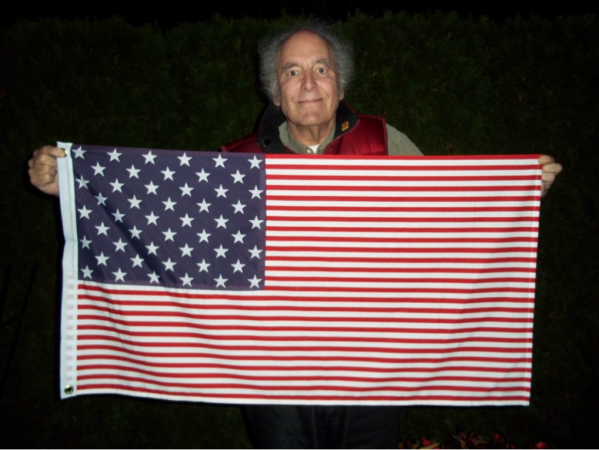Blog post by Scott Mainwaring
On April 4, 1818 the US Congress enacted the following:
An Act to establish the flag of the United States.
Be it enacted by the Senate and House of Representatives of the United States of America, in Congress Assembled, That from and after the fourth day of July next, the flag of the United States be thirteen horizontal stripes, alternate red and white: that the union be twenty stars, white in a blue field.
And be it further enacted, That on the admission of every new state into the Union, one star be added to the union of the flag; and that such addition shall take effect of the fourth day of July then next succeeding such admission.
It established the rationale for every version of the US flag that followed: each new state gets an added star, but the 13 stripes, representing the 13 original states, remain the same. Before this, the last official US flag had been defined in 1795 to represent the new states of Vermont and Kentucky with two new stars — and two new stripes:

As Indiana, Louisiana, Mississippi, Ohio, and Tennessee joined the union, the official flag was unchanged. New states were acknowledged by a variety of unofficial flags that added stars, and sometimes stripes as well (the Zaricor Flag Collection has some of these). But it wasn’t until the 1818 Flag Act that the new states were recognized on the official flag, and a general rule for additions to the flag defined.
PFA member Michael Orelove wondered what would have happened if this Act never happened and instead the flag got a new star and new stripe for each new state. He found some red and white striped fabric and brought this speculative flag to a meeting in 2011:

It’s still recognizable as an American flag, but it demonstrates the wisdom of the Congress in 1818 to rein in over-enthusiasm in the stripe department. We speculated that the field would look pink from a distance, a form of “American Pink Ensign,” and wondered how many other flags had pink fields.
(BTW, the only pink flag we could think of is the unofficial Newfoundland tricolor. Do you know of others?)


On the subject of pink flags, here’s another Canadian example: https://portlandflag.org/2015/02/26/anti-bullying-flag/
[…] Mainwaring, What If There Were No Third Flag Act?, Portland Flag Association, 2015 accessed 4 July […]